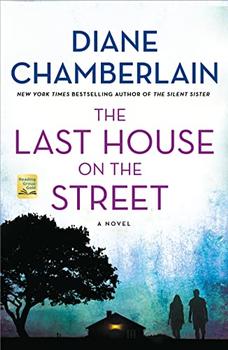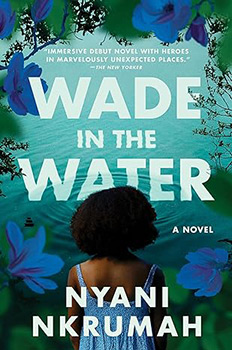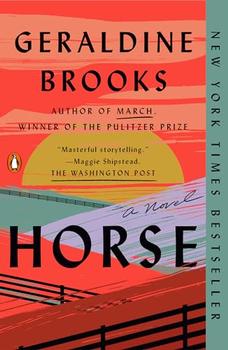Summary | Excerpt | Reading Guide | Reviews | Beyond the book | Read-Alikes | Genres & Themes | Author Bio

A Novel
by Diane ChamberlainThe Last House on the Street opens in the year 2010, as a rather unpleasant, anonymous visitor darkens the door of Kayla Carter's architectural office. The visitor, who calls herself Ann Smith, warns that she is kept awake at night, "thinking about killing someone." Kayla has recently lost her husband in a tragic accident, and Ann Smith reveals that she knows far too much about Kayla's life, and the extraordinary home that she and her husband designed in the neighborhood of Shadow Ridge in Round Hill, North Carolina.
A second narrative ensues, some 45 years prior, in the same small town: that of Ellie Hockley, a young idealist who hopes to participate in the SCOPE (Summer Community Organization and Political Education, see Beyond the Book) program that facilitates the education of potential Black voters in anticipation of the voting rights bill under President Johnson. Seemingly unrelated, the two narratives slowly begin to overlap as Kayla meets Ellie, now in her 60s, and learns that she was once romantically involved with Kayla's father, Reed. Reed and Ellie have clearly drifted apart, and Kayla is left to wonder what dark secrets the two refuse to reveal. Or is the town itself that hopes to bury its past?
Initially, Kayla's narrative proves more engrossing as she becomes victim to strange events that begin with Ann Smith's visit and include the temporary disappearance of her three-year-old daughter Rainie, as well as the defacement of her new home. In contrast, the initial pace of Ellie's story feels a bit plodding, as it provides rudimentary exposition of the civil rights movement in the 1960s. For readers that have even a passing familiarity with the era, this history lesson may feel didactic and unnecessary. However, Ellie's narrative soon gains momentum as she is thrown into the thick of racially charged protests. Meanwhile, Kayla's trajectory begins to feel a tad fantastical: Her daughter's kidnapper leaves her in a treehouse on their property, someone hangs dead squirrels from the trees, and the window that is unlocked according to her elaborate security system is, of course, unlucky number 13. Yet in time, the two narratives begin to work in tandem and the overall pace quickens, resulting in a deeper investment in the fates of both characters.
At times the symbolism feels obvious; we can assume bad things will happen at a place called Shadow Ridge. Additionally, there are more than a few serendipitous coincidences: Ellie's return home to Round Hill despite a decades-long absence just at the precise time Kayla builds her home on a fateful lot with a sordid history. Fortunately, Chamberlain builds her characters in such a way that provokes reader investment and the hope that good will prevail. Through her characters, Chamberlain explores how heavily racism was entrenched in communities throughout the nation during the civil rights movement, despite passed and impending legislation. She also underscores how racial lines triggered divisiveness even amongst immediate family members.
Chamberlain uses the SCOPE program as another lens with which to view the reverberation of racism, which infiltrates the nation and families alike to this day, as well as the importance of advocacy. Ellie Hockley's willingness to put herself on the front line of what her friends and family consider to be not "her fight" serves to remind that America was built on the premise that all Americans possess agency.
In fact, the characters who participate in the SCOPE program are most memorable of all as Chamberlain deftly captures their vacillating, complex perspectives on race, as well as the defined social order which often binds them from acting on their passions. Win, an earnest, serious young Black man, is particularly endearing and worthy of investment as he endures oppression while simultaneously steadfastly persevering towards the goals of the program. The Last House on the Street may initially seem like a quick beach read, but the moral and historical threads laced throughout are fodder for deeper discourse.
![]() This review was originally published in The BookBrowse Review in February 2022, and has been updated for the
February 2023 edition.
Click here to go to this issue.
This review was originally published in The BookBrowse Review in February 2022, and has been updated for the
February 2023 edition.
Click here to go to this issue.

If you liked The Last House on the Street, try these:

by Nyani Nkrumah
Published 2024
Resonant with the emotional urgency of Alice Walker's classic Meridian and the poignant charm of Sue Monk Kidd's The Secret Life of Bees, a gripping debut novel of female power and vulnerability, race, and class that explores the unlikely friendship between a precocious black girl and a mysterious white woman in a small Mississippi town in the ...

by Geraldine Brooks
Published 2024
Winner of the 2022 BookBrowse Fiction Award
A discarded painting in a junk pile, a skeleton in an attic, and the greatest racehorse in American history: from these strands, a Pulitzer Prize winner braids a sweeping story of spirit, obsession, and injustice across American history.
Your guide toexceptional books
BookBrowse seeks out and recommends the best in contemporary fiction and nonfiction—books that not only engage and entertain but also deepen our understanding of ourselves and the world around us.